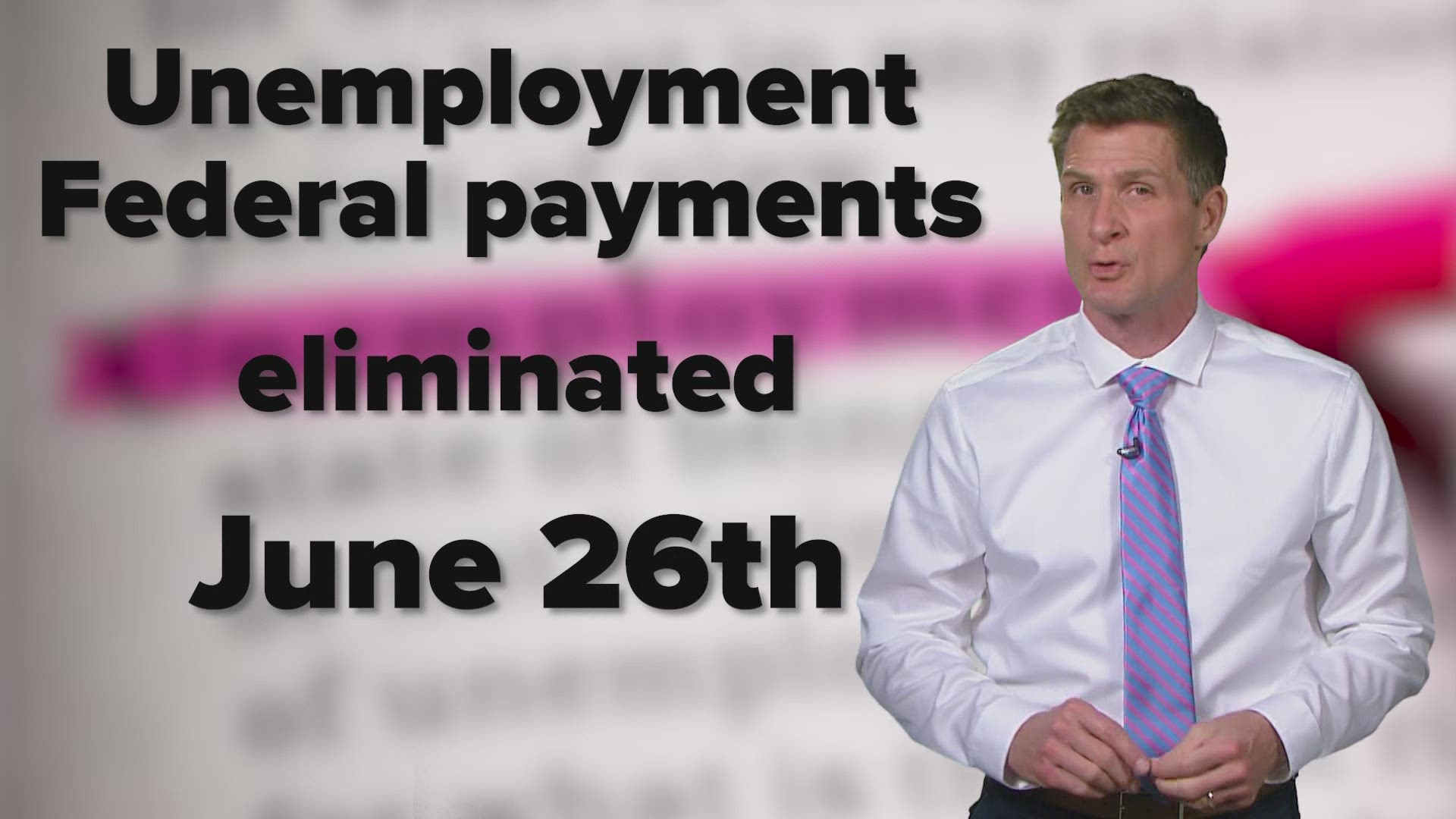AUSTIN, Texas — Texas is getting rid of the additional federal unemployment benefits in place due to the pandemic, effective June 26. Gov. Greg Abbott made the announcement Monday afternoon, noting that “the Texas economy is booming.”
The federal unemployment compensation includes a $300 weekly supplement from the Federal Pandemic Unemployment compensation.
The governor added that the “number of job openings in Texas is almost identical to the number of Texans who are receiving unemployment benefits.”
"In fact, there are nearly 60% more jobs open (and listed) in Texas today than there was in February 2020, the month before the pandemic hit Texas," Abbott said in part in a written statement.
Abbott said of the current openings in Texas, almost half offer wages of more than $15.50/hour, and around 76% offer more than $11.50 per hour.
Abbott also cited a high number of fraudulent claims as motivation for the announcement, which he said total more than 800,000 during the pandemic.
What this affects
If you are on unemployment and you have heard of extensions in federal unemployment benefits, they would be affected by the state opting out of the programs.
I asked the Texas Workforce Commission for additional clarification on the governor’s announcement, and here was the agency’s response:
The governor has announced that on June 26, 2021, Texas will stop participating in ARPA programs, including Federal Pandemic Unemployment Compensation (FPUC), Pandemic Emergency Unemployment Compensation (PEUC), Pandemic Unemployment Assistance (PUA) and the Mixed Earners Unemployment Compensation Program (MEUC). TWC and our workforce Solutions partners continue to offer services to assist individuals in finding employment and their training needs. We will be providing additional information to claimants as we transition away from these programs.
Monday's announcement is a swift departure from what unemployment agency officials were saying just last week.
In response to my previous inquiry about other states eliminating the extra benefit, TWC sent me a message on May 12, saying, “The states that have made the decision to withdraw from the federally funded UI (Unemployment Insurance) programs are different than Texas. Texas is a much larger and diverse state and we are being thoughtful and deliberative in our analysis before making any decision.”
The governor's sweeping announcement came five days later.
Texas the latest of many states to announce elimination of federal payments
At least 18 other states have already made moves to drop the enhanced amounts from the federal government. Critics of the extra unemployment money say it is a disincentive to work, encouraging people to stay on unemployment instead of aggressively looking for a job.
But looking at the data…even with the extra benefit, fewer Texans have been making continued unemployment claims. Those are down to some of the lowest levels we’ve seen in the pandemic.
The same can be said for new applications for unemployment. We did see those swell a few months ago, but they’ve been declining---also down now near pandemic lows.
About that spring swell in jobless claims--as I’ve been reporting--many of those may have been caused by a rash of identity theft. Abbott said this is one more reason to end the more generous benefits.
Fraudsters trying to exploit pandemic chaos take aim at unemployment offices
In all of 2020, the state had 234,268 “suspicious claimants.” Between March 1, 2020 to April 17, 2021, the number of “claimants flagged as suspicious for ID theft totaled 611,300.
If you do the math on that, that would indicate that the number of “suspicious” unemployment claims in 2020 was 234,268…and that in just the first 4.5 months of 2021, that number spiked to 377,032.
All of those numbers are staggering, especially considering that in 2019, TWC raised red flags on just 1,142 suspicious claims. Many of the recent suspicious claims are still being investigated and some of them will turn out to be legitimate.
The good news is that the agency has gotten better at catching potential fraud before payments go out. In Feb. 2021, TWC had already sent payments to about 26% of suspicious claimants by the time the system flagged them. But over the last month, the agency reports that of the suspicious claims, about 3% had received payments by the time the agency flagged them.

